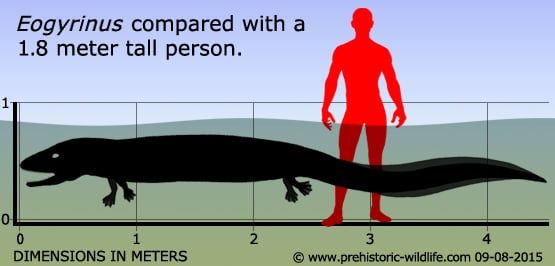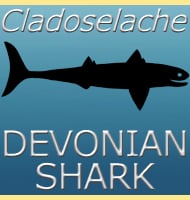In Depth
For the Carboniferous period Eogyrinus was a particularly large predator that had an almost eel-like body that measured out over four meters in length. This body, which featured limbs severely reduced in physical size, was an adaptation to swimming and hunting in Carboniferous swamps which would have been clogged with dense weeds, submerged plants and roots. A body with a very small frontal profile like Eogyrinus had would have had little difficultly in navigating the submerged obstacles, meaning that Eogyrinus could root out hidden prey no matter where they tried to hide.
In more modern times, Eogyrinus has been speculated to be synonymous with the genus Pholiderpeton. If this is correct then fossils attributed to Eogyrinus will have to be renamed and moved to Pholiderpeton since Pholiderpeton was named long before Eogyrinus was.
Further Reading
- Croonian lecture.—The evolution and origin of the Amphibia. - Proceedings of the Royal Society of London, Series B 214:189-257. - D. M. S. Watson - 1926. - The axial skeleton of the labyrinthodont Eogyrinus attheyi. - Journal of Zoology. 150: 199-222. - A. L. Panchen - 1966. - The skull and skeleton of Eogyrinus attheyi Watson (Amphibia: Labyrinthodontia). - Philosophical Transactions of the Royal Society of London, B. 263: 279-326. - A. L. Panchen - 1972.- Dates, nodes and character conflict: addressing the lissamphibian origin problem. – Journal of Systematic Palaeontology. 5 (1): 69–122.- M. Ruta & M. I. Coates – 2007.










